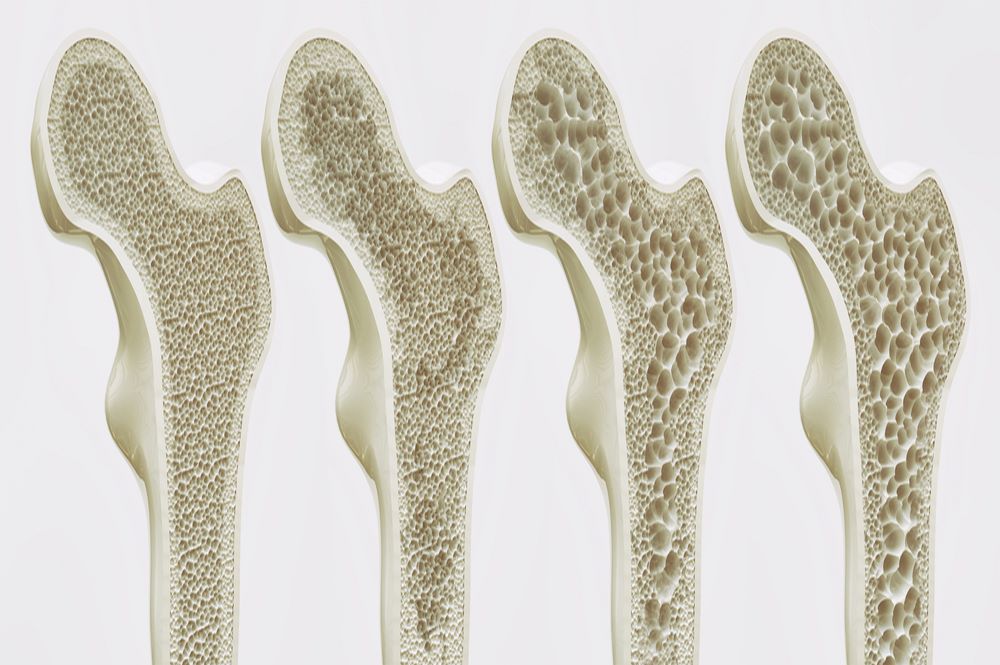The most common sites of fractures include the hip, the leg, the vertebra, or the wrist.
Bone Structural Changes In Osteoporosis

Structurally bone comprises of two parts:
- The cortical bone, which makes the outer hard shell of the bone. It is highly organized, also called compact bone.
- The spongy bone, which makes up the inner trabecular network of the bone. The presence of spongy bone effectively reduces the weight of bones and allows smooth, easy limb mobility.
The bone mass comprises of two essential components, collagen and calcium salts. Proportionally, it is one-third of collagen for two-thirds of calcium salts that make up the bones. Collagen protein provides a scaffold for binding of calcium salts, which may combine with other minerals like magnesium, sulfates, and fluorides. The collagen permits limb flexibility, while the minerals contribute to bone strength. An imbalance in either component can compromise bone function or structure.
With osteoporosis, the bone density decreases, which means that the spaces in the lattice network of spongy bone grow wider. It is also accompanied by the thinning of trabecular network branches, and also of the compact bone. The minerals crystallized on the trabecular network are slowly lost, the collagen framework can then give way to the slightest pressure.

